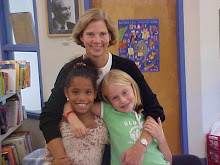K-1 teacher, Jennifer Gresens just wrote a beautiful piece about living in the here and now. As parents we feel the anxiety of our high stakes world, and we worry about whether our children will gain all the skills and experiences they need to be successful adults. Jennifer says,
The problem with looking forward, always in preparation mode, is the loss of the here and now. Children will never get those years back. They'll only be five once.
Her answer? Children need us to trust that where they are right now is just right. But for many parents, that's hard!
We do need to trust that in a supportive environment, eventually our kids will learn to read, master multiplication, and get into a good college. Pushing them too much, too fast, won't help.
For parents who know they shouldn't worry, but are in worry mode anyway, try out some of these 49 Phrases to Calm an Anxious Child for yourself: "You are not alone in how you feel" and "Let's learn more about it." And if all else fails, there is always the time-honored, "We are going for a walk."










